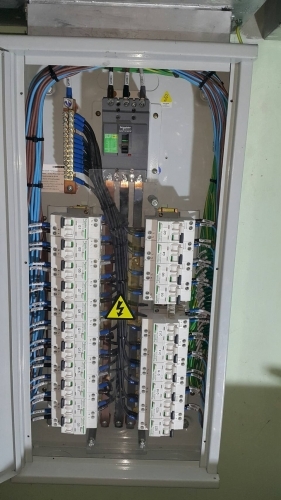This is a custom board made to fit in a particularly awkward space, I have a local colleague who is branding it "unsafe" but is really unable to explain what his issues are.
Thoughts?
EDIT Please ignore the Schneider labelling on the box, the guts is all non-standard it was just cheaper to buy a suitable unit and remove the works than to get a custom one made.

